| TYPES OF PRINT MEDIA |
 |
| Gone are the days when paper was the only media (aka substrate) that could pass through a printer. Today, both the technician at a commercial printing corporation and the private owner of a little desktop printer in the office have the ability to create printed graphics and documents on a wide range of substrates. Each type produces unique traits that result in a completely original piece of artwork, advertising or other display that behaves precisely as it is intended.
Scan the table summary outlining the types of media each industry uses, then read on to learn more about each type.
|
SUMMARY
| INDUSTRY |
MEDIA TYPES |
APPLICATIONS |
Fine Art Reproduction
| Canvas, Fine art paper, Fabrics, Fiber paper, Photographic paper, Wallcovering |
Small- or large-scale wall hangings, prints for sale, less costly option to display famous artwork |
|
Commercial Advertising
| Vinyl, Fabrics, Adhesive-backed material, Posterboard |
Storefront displays, point-of-purchase, billboards, murals, mailouts and member cards |
|
| Personal/At Home Use |
Bond paper, Laser paper, Posterboard, Photographic paper |
General documents, small-scale art and photographs, test prints, school and work presentation materials |
|
| ADHESIVE-BACKED MATERIAL
|
 |
|
Printer paper with pressure-sensitive adhesive backing is an invaluable material for printing companies and customers alike. It not only allows the customer to affix their printed product to virtually any surface, it can often be easily removed without damaging the surface on which was placed, and can sometimes be reused again and again.
Adhesive-backed substrates for printing must not only serve their intended purpose final purpose, but also be able to pass through the bends and turns of the printer without peeling off their protective backing - which can cause real damage. The adhesive also must be composed so as not to melt within the high temperatures of some machines. Different papers are available for laser and inkjet printers, as well as use with UV-curable and screen printing inks. Printable transparent film and vinyl (for signs and decals) is also on the market.
|
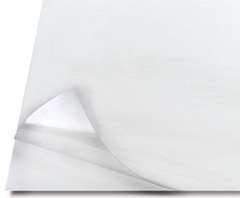
|
| BANNER MATERIALS
|
 |
|
For large-scale reproduction, banners must be printed on sturdy material that will not tear under its own weight. Available beginning at a length of three feet, they are usually made from strong vinyl that can withstand environmental conditions when hung outside for a period of time. The material must be constructed so as not to absorb water, which would add weight and cause the banner to dip.
Banner material will be woven with a long-edge grain, so the material does not rip when it is hanging. It will generally come in a roll unless a flatbed printer is used, in which case the material will be stretched flat across the printer's surface.
|

|
| BOND PAPER
|
 |
|
Originally used in preparing government bonds, this type of paper is of high quality and quite durable, generally having a paper weight of more than 50 g/m². In the printing business, this paper is used to produce important documents, or may be used as a lower-cost option to light fine art papers, for producing artistic reproductions.
Bond paper may be used to create original artworks using pen, ink, or pencil, and is sometimes made from rag pulp, which creates a stronger paper with a distinct texture.
|
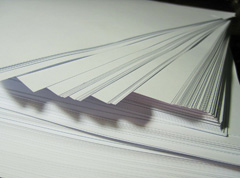
|
| CANVAS
|
 |
|
Composed of cotton, polyester, linen, or a combination of these, printer canvas (also called digital canvas) differs from artist's canvas in that is generally treated with an ink-receptive coating that ensures the printer inks are properly absorbed and contained in the canvas.
Depending on the thickness of the coating and the weave of the material, printer canvas may be quite rough in texture, which gives the digital image a more painterly appearance, or very smooth. Printer canvas is usually sprayed or painted with a clear, protective coating once printed, to protect it from scratching, tearing, and moisture.
Order Online:
|
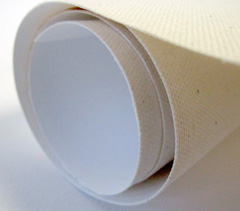
|
| FABRIC
|
 |
|
Other fabric materials can be printed as well. These fabrics, more commonly called textiles, are developed based both on intended use and the type of printer used. Different treatments and coatings must be applied for aqueous (water-based), UV-curable, solvent, and latex inks. Printable textiles may be made from polyester, cotton, spandex, or a combination of these.
In addition to the necessary coatings, the fabric may also be treated to be flame retardant or waterproof, depending on the application. Printable textiles are generally sold on rolls, with large-scale prints being the most common.
|
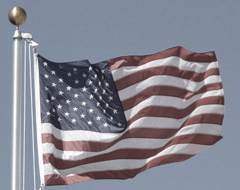
|
| FIBER PAPERS
|
 |
|
Used in the creation of photographic prints, fiber-based papers are coated with a substance called baryta (a mixture of barium sulfate and strontium). This treatment brightens the paper, or tints may be added to subtle color. Fiber paper usually has a gelatin layer as well, which protects the paper during processing. Most often, these kinds of paper are used when the photographer requires high-quality, long lasting prints for exhibition or sale.
Fiber-based papers are also available for digital printing, considered ideal for producing beautiful black and white photographic images with excellent grey tones. Baryta is added to the ink-receptive coating in order to achieve the same effect as traditional papers.
|

|
| FINE ART PAPER
|
 |
|
There is a huge variety of fine art papers available for digital printing. Much like fabrics, they vary depending on their intended application and the printer/ink that will be used to produce them. These papers will almost always be archival or conservation quality, which means they are free from acid, chlorine, and lignin (a natural polymer found in wood that causes deterioration), and buffered to achieve a neutral pH prior to being coating for the printer.
Fine art paper is generally 100% cotton, though cotton blends do exist. It is available in many different surface textures from smooth to as rough as watercolor paper, and finishes such as matte, satin, and gloss. The color of the paper will also vary by material and manufacturer, from a cool blue-white to a soft, almost off-white.
|
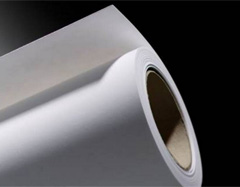
|
| LASER PAPER
|
 |
|
The term "laser paper" usually refers to papers made for use with laser printers. These papers usually have no coatings applied because laser printers work by melting powdered toner onto the paper at very high heat. This heat will melt most coatings, damaging both the paper and the printer. Unlike inkjet inks, laser toner does not require special ink-receptive coatings.
Some coatings have been developed with the required heat resistance for use in laser printers. As such, matte and glossy finishes are available for laser papers.
|
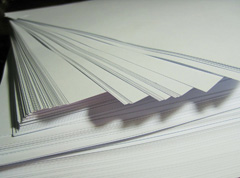
|
| PHOTOGRAPHIC PAPER
|
 |
|
Papers for printing digital photographic reproductions are usually formulated to resemble and produce images with the same qualities as those created in a dark room. Available in matte, semi-matte, luster, and glossy finishes. Since the paper will have ink deposited onto its surface instead of being exposed to light, it does not need to be light sensitive (achieved by silver halide), and therefore other measures must be taken to create a similar image.
Photo paper refers to papers made specifically for producing photographic prints, but the customer is not limited to only these options. Digital photographic images can be printed on any substrate, from fine art papers, to canvas, to fabric. Naturally, color density and quality will be different with each substrate.
|
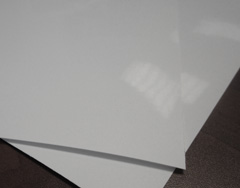
|
| POLYCARBONATE
|
 |
|
Polycarbonate (PC) is a specific type of thermoplastic polymer. Printable PC films are most commonly clear or white, and are sold on a roll. They may have a polish (gloss) or matte finish, and some varieties have a pressure-sensitive adhesive on one side for easy application on walls and windows. Limited ink density is suggested for these types of printable film, as the material may contract as the ink dries, causing the graphic to peel up at the edges.
|

|
| POLYESTER
|
 |
|
Synthetic digital paper and canvas is often made from polyester. In the case of paper, this wood-free substrate is usually manufactured for laser printers, and results in a very durable, tear-proof paper that produces strong, bold colors. Some of these papers can be used with UV cured inkjet printers and, if treated with a special coating, some solvent and aqueous inks.
Polyester is also commonly used in both artist's and digital canvas. The substrate may be 100% polyester, or a poly-cotton blend.
|

|
| POLYETHYLENE
|
 |
|
Available for use primarily with offset printers and HP Indigo ink printers, polyethylene film is a synthetic sheet that may be used for printing labels (options with adhesive backing exist), binders, and signage. This substrate is available in various white and grey (silver) tints, and may even be produced from recycled materials.
Polyethylene is also used as a coating on some photographic papers. This application serves as a laminate that prevents the paper from curling and assists in water resistance.
|

|
| POLYPROPYLENE
|
 |
|
Another type of synthetic paper or film used in digital reproduction, polyproylene is also available with adhesive backing, and is ideal for banners, point-of-sale displays and advertisement posters. Like polyethylene, these films are generally curl-free. Matte and glossy options exist, and some types are completely opaque (allow no light to shine through when hung away from the wall).
This substrate can be used with UV curable, solvent, latex and Indigo inks, though a primer can be applied for use with inkjet printers.
|

|
| POSTERBOARD
|
 |
|
Poster board (also called display board) is a thick paper with enough rigidity to stand unsupported. Its standard available size is 22" x 28" and it is often used in craft or display projects and therefore is commonly found in art supply stores. For use in printing, however, the poster board must either have an ink-receptive coating applied by the manufacturer or by the technician prior to being printed.
Epson appears to be one of the few brands that offers poster board prepared for use with various inks including pigment (inkjet). Untreated poster board may also be used as to mount an image printed on other digital paper or canvas.
|

|
| PROOFING PAPER
|
 |
|
Proofing paper is used to allow the customer and print technician to view the printed image on paper before the run (often hundreds or thousands of copies) begins. The paper shows each detail of the image, any text, and the composition and color relationships. The proof is reviewed carefully to ensure there are no errors or areas that need additional work before the file is sent to print.
If used to photographic proofs, the paper may have a resin coating to give it a glossy sheen reminiscent of photographic paper. Though it looks very similar to the substrate on which the final product will be printed, proofing paper does not need to be long lasting and can simply be laminated if preservation is required. Due to its short term requirements, it is less costly than the paper used for the final product.
Companies such as Agfa, Mitsubishi Imaging, HP, and Epson offer various types of proofing media.
|

|
| TYVEK
|
 |
|
Made from polyethylene (a petroleum-based plastic) fibers flashspun to produce an unwoven, synthetic material, Tyvek (the brand name from the company DuPont) is most often used to protect building foundations before the siding has been put up. The material is strong and difficult to tear (but easily cut), and repels liquid water.
In printing, this substrate can be used much like regular paper, though it must be properly treated for any ink applications besides lithographic and flexographic. Solvent inks with too high a solvent concentration can cause the material to swell, and water-based inks may cause the image to feather or blur. Tyvek is commonly used for printing ski tags, banners, tags, and labels.
|
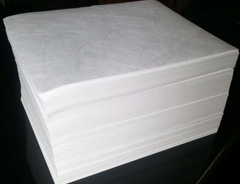
|
| VINYL
|
 |
|
The term vinyl may refer to polyvinyl chloride (PVC), or vinyl chloride. Both are produced in sheet/roll form, and have a plastic feel which may be smooth or textured. Vinyl is widely used in the production of commercial advertising and display graphics.
- Banner: Vinyl (PVC) film is the most common substrate used for producing hanging banners for store fronts and point-of-purchase displays. Since these products are often used outdoors, both the material and the inks must stand up to the elements. Various weights of vinyl are available, either single or double sided. At a certain size, the vinyl may be produced as a mesh, so the wind can pass through the display without tearing the material.
Solvent inks are more common on this substrate than water-based, since these inks are manufactured to be waterproof and fade-resistant up to a point. A very large format printer, roll-based or flatbed, is required to produce printed materials of this size.
- Calendered: Another version of vinyl used in sign printing is calendered vinyl. The name refers to how the material is manufactured. Depending on the process, this thick, stiff vinyl has a lifespan of anywhere from one to seven years. It tends to be lower in cost than other vinyls, has a variety of finish options (range of glossiness), and performs best on flat or slightly curved surfaces.
- Cast: The name of this vinyl again refers to how it is produced, which involves the liquid mixture being placed on a "casting sheet" and moved through multiple ovens to allow the solvents to evaporate. Cast vinyl has a very low shrinkage rate, because no stress or stretching is applied during manufacture. It can also be made extremely thin, which makes it a suitable cover for surfaces with fine curves or ridges. The range of available colors is quite wide as well.
|
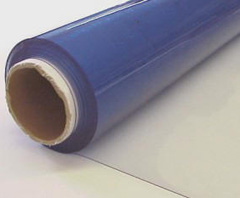
|
| WALLCOVERING
|
 |
|
A variety of printable wallpapers are on the market today. These materials allow customers to order custom, large-scale graphics which can be easily applied to their walls much like traditional wall covering products. Polyester-blend (PVC-free) wallcovering can be printed using solvent, latex, or UV curable inks, and is installed and functions just like regular wallpaper. Different styles are available, including paint stroke or stipple-textured, and smooth surfaces. This media is scratch resistant and largely inflammable.
|
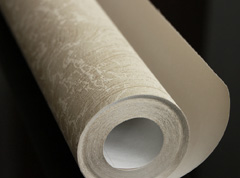
|
| RIGID SUBSTRATES
|
 |
- Wood: There are multiple options for creating a digital image printed on wood. If properly treated with ink-receptive coating, a slab of solid wood (birch is common) can be printed directly, with a flatbed printer. Sheets of wood veneer are also produced, which can be used with any inkjet printer and come in different thicknesses. Different wood species such as cherry, birch, pine, and maple are available.
- Metal: There are different ways to apply an image to metal. Sheets of treated aluminium or di-bond (two thin sheets of aluminium with a sheet of polystyrene sandwiched between) can be printed to directly, using a flatbed printer. Alternately, special inks can be used to print the image onto transfer paper which is infused into the aluminium, a process called dye-sublimation. A third option involves simply adhering a paper print to a sheet of di-bond.
- Glass/Acrylic: Much like metal prints, a paper image can be adhered face-down to a piece of clear glass or acrylic and displayed. Alternately, a mirrored version of the digital image can be printed directly to the substrate, so when it is flipped over, the unprinted side of the glass or acrylic serves as a protective front cover, with the image clearly displayed behind.
- Vinyl: Non-flexible vinyl is available in various thicknesses, colors, and finishes (gloss, matte, polished, opaque). It is easy to print on using a flatbed printer or screen printing, and can be used for hanging signage, nameplates, and gift cards. The hardness of this vinyl means it will protect the surface on which it is placed, as well as embellish it.
|
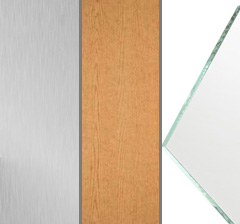
|
| Whatever the customer's need, there is a media for that purpose. Whether the requirement is singular or large-scale commercial, for advertisement, distribution, or decor, there is a substrate ideal for that function. It is important that the customer let the print technician know exactly what they require their order for, so the technician can suggest the best material for the job.
If you have any questions regarding the products we offer at KeenART Media, do not hesitate to contact us. Our knowledgeable staff are always happy to assist you.
|
|

|



|
USA Giclee On Canvas, Fine Art Printing - Art Scanning & Reproductions - Handmade Oil Paintings - Custom Wood Panels, Metal Picture Framing - Block/Plaque Mountings, Large Format Dry Mounting & Lamination - Art Supplies: Stretcher Bars, Cradled Wood Panels and Artist Canvas - Collages On Canvas - Plexi/Acrylic Face Mounts - Block Acrylics, Fabric Printing, Dye Sublimation - Cityscape Skyline Prints, Resin, Photo Gifts and more...
Frame Assembly Guide - Dovetail System
USA Laser Engraving & Cutting Services
|
|
© 2002-2024 - KeenART Media Ltd.
|
|
| |
|
